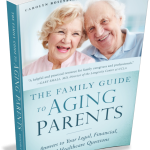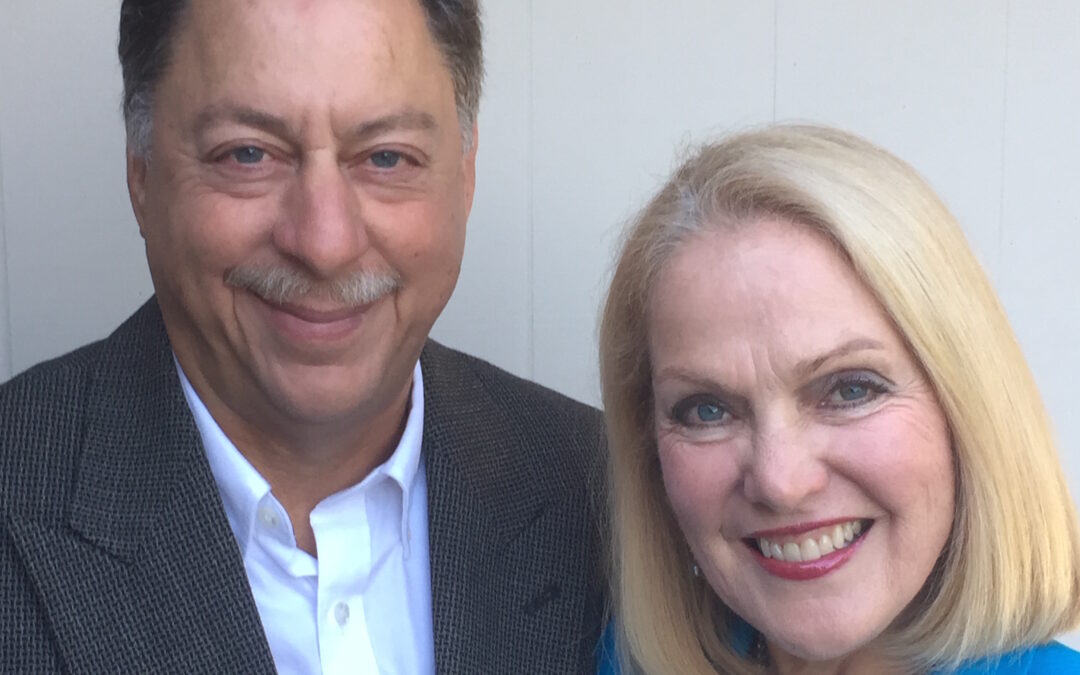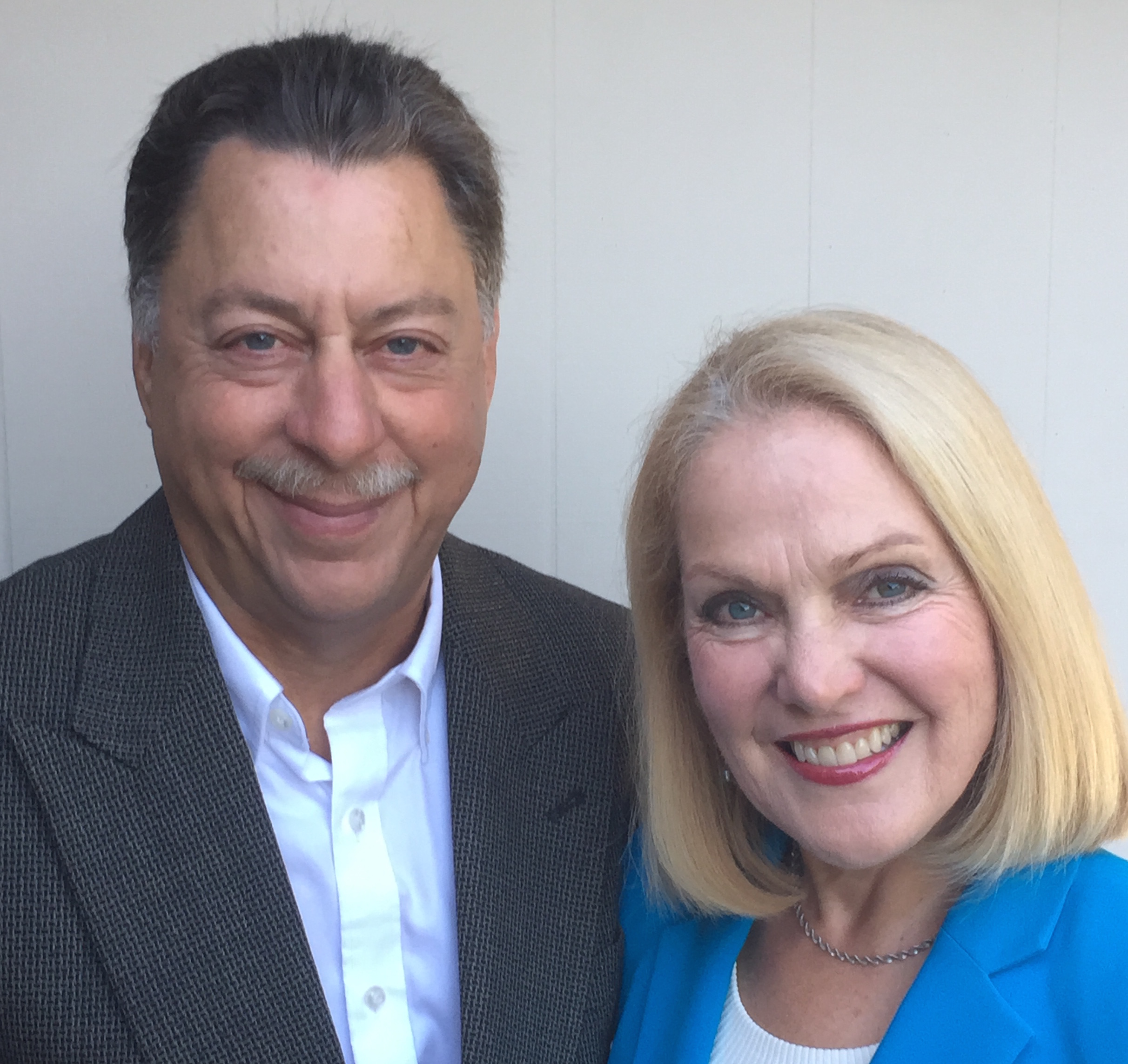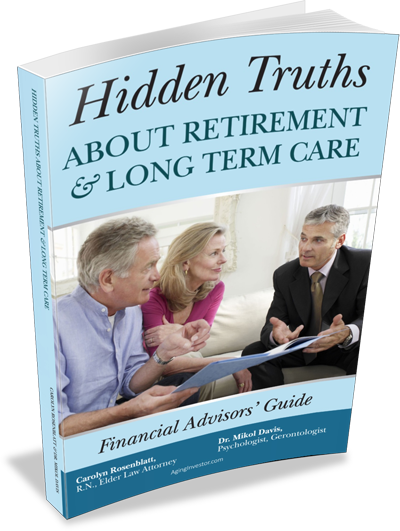
Dec 30, 2020 | aging, aging in place, aging investor, cost of aging, cost of long term care, elder investor, elderly, finances for elders, financial advisors, handling money for seniors, investor, long term care, medicare, retirement planning, senior investor, seniors finances
In retirement planning discussions, we see this statement financial professionals often publish for their clients:
“The average lifetime out of pocket costs for healthcare for a 65 year old couple retiring today is $285,000.”
Why should you never say this? It’s misleading at best and at worst, it’s false. From my own research as to where the number came from, I found it in government sources calculating Medicare deductibles and supplemental insurance payments, and co-pays Medicare does not cover. Generally, the out of pocket calculation refers to non-covered “medical” costs. But when that term gets diluted to mean “healthcare” it is far too broad and it simply ignores the reality that long term care is indeed healthcare. Medicare does not cover that at all, except for limited stays in skilled nursing homes following hospitalizations. It is noteworthy that when the Federal government uses data to calculate what out of pocket medical costs will be, the subject of long term care is entirely omitted.
The “average” lifetime cost of long-term care for two people in this country is far greater than $285,000. According to research by long term care insurance provider, Genworth, seven in ten people will need long term care at some point in their lives.
The comprehensive Genworth cost of care study, done annually, was published for 2020. Consider that at some point, with longevity being as it is, an older person with multiple medical conditions may need 24/7 care. Almost everyone will tell the advisor that he or she wants to stay at home and age in place. What will that cost at home in any of the most expensive states? In California, for example, the median cost of in-home care with a non-licensed caregiver full time, 27/7 is $252,000 per year! This is not medical care, in the sense that no skilled nursing is part of it, no doctor’s prescription is involved, and the agencies that supply unlicensed home care workers can charge whatever the market will bear.
A truthful financial professional will never mislead aging clients, or those planning for retirement by telling them that all they have to worry about for their future out of pocket healthcare costs is $285,000. Prudent financial advisors will themselves look annually at the Genworth study and help clients calculate the costs of long-term care, which every person should know about.
Costs of care, whether at home, in an adult day health center, in assisted living or in a skilled nursing facility vary widely from state to state. Looking at national median costs can be of little benefit to anyone doing retirement planning. Instead, using data from the Genworth study, one can look state by state for the real, most applicable numbers derived from where your client lives or plans to retire.
From my perspective, financial advisors are not educated to fully understand the difference between government provided statistics about out of pocket, non-Medicare covered medical costs and what we mean by long term care. They are quite different terms. It is distressing to me, with substantial experience in nursing, to see the fallacy of statements published by financial professionals about what retirement planning should include. Clients will be shocked to find that their own experience with having to pay for long term care out of pocket is not what their own advisor told them years before.
If you are in the retirement planning business and you want to serve your clients well, bear in mind that the data telling us that seven in ten people will need long term care at some point is likely true. Don’t fool yourself into thinking that retirement planning is just fine if a couple puts away enough to generate $285,000 for out of pocket medical costs. They also need to plan for how to pay for long term care, which they are statistically likely to need. That cost can destroy the most carefully laid plans for retirement income.
As a real-life example, take a client of ours, “George” at AgingParents.com, where we offer advice and guidance to families with aging loved ones. The advice encompasses legal, financial and healthcare issues as well as diminished capacity issues. George is 98 years of age and still sharp, though with some memory loss problems. He was wealthy at one point, after two successful careers. He owns his own home and wants to stay there for the rest of his days. His physical health is fragile and he now needs 24/7 help. He hired a good agency to provide in-home care. He spends in excess of $300,000 a year for caregiving alone, not counting the cost of everything else involved in home ownership, food, recreation, and out of pocket medical costs. Those medical costs involve dental surgery and equipment he needs at home. He has less than $400,000 left in savings. What if he lives another two to four years?
As you can see from this example, George is not a rare case. Many people do live into their 90s and beyond. Many start out with financial security, only to see assets rapidly depleted as the cost of care escalates to heights no one wanted to think about in retirement planning.
The Takeway
If you pride yourself in doing great retirement planning with clients, get real. Sit down with the data and find out what your clients might expect to need if they live long and require help at home or elsewhere. Tell the truth about it. If they need long-term care insurance to feel secure, talk about it. If they have sufficient assets to make it to 100 or so with full time care, they don’t need to get long term care insurance but they will need to have access to sufficient cash to cover the actual, not fantasy, costs. Above all, be clear in your own mind about what “out of pocket medical costs” means as compared with long term care costs. You are the key to these honest calculations. You can be the hero of the retirement planning story when you present an honest picture to every client you have.
By Carolyn L. Rosenblatt, RN, Attorney, AgingInvestor.com
About Carolyn Rosenblatt and Dr. Mikol Davis
Carolyn Rosenblatt and Dr. Mikol Davis are co-authors of The Family Guide to Aging Parents (www.agingparents.com) and Succeed With Senior Clients: A Financial Advisors Guide To Best Practices and Hidden Truths About Retirement and Long Term Care. Rosenblatt, a registered nurse and elder law attorney, has more than 45 years combined experience in her professions. She has been quoted in the New York Times and, Wall Street Journal, Money magazine and many other publications. Davis, a clinical psychologist and gerontologist, has more than 44 years experience as a mental health provider. In addition to serving his patients, Davis creates online courses and products to assist professionals and the public with understanding aging issues. Rosenblatt and Davis have been married for 36 years.

Dec 8, 2020 | aging, aging in place, cost of aging, cost of long term care, financial advisors, handling money for aging parents, long term care, retirement, retirement planning
Few things are more stressful than family disagreements, especially related to helping an aging family member. You’re invited to a VIP Virtual Event: How to Resolve Family Conflicts, Care, Control and Money Approaches from Legal, Psychological and Compassionate Perspectives
Wednesday, December 9 I 4:00 – 5:00 pm Pacific Standard Time
Featuring special guest speakers Carolyn L. Rosenblatt, RN, Attorney and Dr. Mikol Davis, Psychologist of AgingParents.com
RSVP david@eleganceatnovato.com (Link will be provided with RSVP)
The first 20 attendees to RSVP will receive “The Family Guide to Aging Parents: Answers to Your Legal, Financial and Healthcare Questions,”  by Carolyn L. Rosenblatt.
by Carolyn L. Rosenblatt.

Jun 18, 2019 | aging, aging investor, cost of aging, cost of long term care, declining health, elder investor, elderly, finances for elders, financial advisors, financial judgement, long term care, nursing home, resources for senior, resources for seniors, retirement, retirement planning, senior investor, seniors finances
An Important Question For Your Clients Contemplating Retirement
Longevity is increasing, as millions of Americans are living to 90 years and above, the U.S. Census Bureau reports. Will any of these long-lived folks be the parents of your current clients? Some clients reaching retirement age themselves will be dealing with the challenges of their aging family members, even as they plan their own retirement years.
One critical question perhaps not built into your calculations for retirement income needs should be whether your clients can reasonably expect to have to support their aging parents. As reported by NPR citing the Census Bureau report, nearly 20 percent of 90- to 94-year-olds live in nursing homes. Among those 95-99, about 31 percent are in nursing homes. And in the 100+ population, 38.2 percent live in nursing homes. Who pays for that care?
Most financial advisors have a basic understanding that Medicare benefits are very limited when it comes to nursing home care. Post hospitalization, the maximum benefit is 100 days and most people do not receive even that, due to qualification requirements. For those who have to live in nursing homes long term, rather than for shorter stays involving rehabilitation such as physical therapy, the costs are paid out of pocket. The exception is for the lowest income elders. For them, Medicaid pays the cost of long term nursing home care. For everyone else, a long stay in a nursing home can wipe out an older person’s assets. The financial burden then falls on family who may have the means to prevent the impoverishment of their loved one.
Some adult children will not allow Mom or Dad to live in a nursing home long term. Maybe it was a promise they made to the aging parent. Essentially, it is no one’s first choice of where to go when care is needed. If a family has some assets but does not want to wipe out their own retirement income by paying for nursing home care or even full-time home care, the most cost effective solution is to take in the aging parent.
There is a cost involved in this choice as well, and it extends to many factors beyond money. Every family relationship in the household is impacted. Some adult children are not patient, not willing and not good at caring for an impaired aging parent in declining health. For others it is seen as an honor and a final chance to give back to the parent in gratitude for what the parent did for them over a long lifetime. Individuals vary in their perspectives, ability and willingness to take in an aging loved one.
Some families take in an aging parent and pay for part-time help, providing a significant part of the caregiving themselves. Others pay for assisted living for an aging parent, but that is not suitable for those who need care around the clock. Others allow a parent to spend down their assets until they can qualify for state paid nursing home care. The parent is then placed there somewhat as a last resort.
No matter what choice a client will make about an aging parent, it is important that the financial professional in their lives helps them see the big picture and plan according to anticipated needs for both the client and the elders for whom they feel responsible.
The Takeaways
- Longevity is creating an issue for families who are facing years of decline in aging parents who may not have the means to pay for care on their own.
- Responsible financial advisors must raise the question with every retiring client: is there someone in your life that you will likely have to support financially during your retirement?
- Advisors and families alike must consider and plan for how any essential financial support should be handled by adult children of aging parents. Take in the parent? Supplement the parent’s income by paying for home care or assisted living?
- When the means are not available to offer financial support, and the physical needs for care are extensive, it sometimes becomes necessary to allow the aging parent to become impoverished and to qualify for Medicaid. Medicaid does pay for long term nursing home care.
- For those with sufficient investment income expected, financial support for aging parents can be part of an overall retirement planning strategy. It is up to the financial professional to help with this process.
Carolyn L. Rosenblatt, RN, Attorney, AgingInvestor.com ©AgingInvestor.com™
If you the financial professional need a clear explanation of the actual costs of long term care, whether at home, in adult day centers, assisted living or skilled nursing, get the facts so you can plan with clients. It’s all laid out for you in Hidden Truths About Retirement & Long Term Care, available now. Click here to get your print, digital, or audio copy.
About Carolyn Rosenblatt and Dr. Mikol Davis
Carolyn Rosenblatt and Dr. Mikol Davis are co-authors of The Family Guide to Aging Parents (www.agingparents.com) and Succeed With Senior Clients: A Financial Advisors Guide To Best Practices. Rosenblatt, a registered nurse and elder law attorney, has more than 45 years combined experience in her professions. She has been quoted in the New York Times, Wall Street Journal, Money magazine and many other publications. Davis, a clinical psychologist and gerontologist, has more than 44 years experience as a mental health provider. In addition to serving his patients, Davis creates online courses and products to assist professionals and the public with understanding aging issues. Rosenblatt and Davis have been married for 34 years.

Feb 5, 2019 | aging, cost of aging, cost of long term care, custodial care, declining health, elderly, finances for elders, financial advisors, handling money for aging parents, handling money for seniors, health, long term care, nursing home, resources for senior, resources for seniors, retirement planning, seniors finances
The financial services industry often refers to retirement planning for the future with aging clients in terms of “housing choices”. This reflects some degree of misperception about what happens as we age. For healthy people of retirement age, there is little interest in planning for the need for care and planning for loss of independence. People usually resist talking about it. We don’t choose to lose our independence. It happens. It is up to the advisor to raise it if you want to advise for longevity. The subject is emotional and can be difficult.
Where we need to get help when we can’t be independent any longer is really a choice about care, rather than housing. This is not house shopping. Does a client want to pay for care in her own home when that time comes? Most would say yes, they want to remain at home. They then must calculate what a home care worker costs and whether that is the best way to receive the help they are likely to need one day with their activities. Can the resources be available to enable that choice of where care will be given?
If an elderly client is living alone and can’t manage at home anymore without assistance, there are indeed choices, often driven by the degree of care needed and the cost of getting it. Elders may not be interested any longer in maintaining a house, cooking, shopping, and other necessary chores. For them, assisted living may be desirable because their daily lives will be different and free from the burden of the household that has become unmanageable. The choice to go to assisted living is usually not one a client is going to make because of wanting to downsize into an apartment for its own sake. Rather that is the price of going to the place where assistance is on hand. Again it is to receive care, not because they love the idea of not having their home any longer. For many elders, downsizing from a house to an assisted living apartment is a difficult adjustment, required because of physical or mental changes of aging. From that perspective it is a choice forced upon them.
A factor every advisor should know is that the likelihood of living alone increases with age. Almost half of women age 75+ lived alone in 2010, according to the Institute on Aging. The “choice” of a different living arrangement is brought on by safety and care concerns, often raised by their adult children.
It will be good for every advisor who wants to help clients plan for longevity to consider that their role is to introduce the issue of possibly needing care in the future, as about 70% of us will one day. If your client has you in her life, she already has housing. Planning for “housing” is a misnomer. Focus on places and choices where care can be delivered. Having no care plan can be disastrous, as sudden health crises can force decisions without considering the cost of care in advance.
In helping to educate your client about where he or she can receive care, the costs of all the offerings available in most areas are spelled out in detail in our book, Hidden Truths About Retirement & Long Term Care. You can develop quick expertise on the subject there. Skilled advice about longevity for your aging clients requires knowing your numbers, what care options are available where they live and how much they can expect to spend for that care. Smart advisors gather the data before a crisis happens and urge clients to look at it with them.
By Carolyn L. Rosenblatt, RN, Elder law attorney, AgingInvestor.com

Jan 30, 2019 | aging, aging in place, cost of aging, cost of long term care, declining health, diminished cognition, elderly, finances for elders, financial advisors, financial capacity, handling money for seniors, long term care, nursing home
Most advisors who even ask this question of their retirement-aged clients never spend time on it. About 90% of those asked say they want to remain in their own homes as long as possible. That sounds fine. Until one faces physical decline, cognitive impairment or both. The advisor providing competent guidance about financing aging at home had better know the facts.
None of us like to think about losing physical ability or needing help. We abhor the thought of losing our total independence. In our view at AgingInvestor.com, the only advice clients are getting is about the long term picture is whether or not to purchase long term care insurance. Since most people don’t do that, the actual costs of living at home can boggle the mind. It’s the best advisor’s obligation to educate your client about the risks of the plan to age in place, just as it is your obligation to educate them about balancing their portfolios. You are giving the client added value if you take the time to talk them through the risks and dollars they may need to have available.
Here are some briefly stated facts from a real case in which an 89 year old wanted to age in place and his wife promised he would never have to leave home.
At the outset of his declining health, he had about $3M in invested assets. His portfolio was healthy and balanced for his age, according to conventional wisdom. He began to lose his ability to walk due to multiple medical problems. His wife hired home helpers, three days a week at first. As his conditions progressed he needed more and more help. He had to have a wheelchair, and a special van. A stair chair was installed in their two-story home. By the time he reached age 95, he was spending over $150,000 a year on care and assistance around the clock. In the space of time during which he was steadily losing independence until he passed away at 95, his assets were depleted to the tune of $2M. He lived in a higher end market for the needed help but the reality is that in any market, the kind of care he needed would be very expensive.
For him, aging in place was more costly than a skilled nursing facility would have been. Home modifications, private caregivers, (none of whom were licensed nurses), equipment, medications, adaptive devices, etc. drained his resources by 2/3. And not everyone has as much invested as he had to even start the journey. His wife had her own assets and she paid the cost of household maintenance, taxes, food, and utilities with her funds. Had she relied on him for those things too, there would likely have been little left at the end of his life.
It is not all doom and gloom however. Many clients live rather well in their last years without all the care this gentleman needed. Some get by with family caregiving help, and some have fewer medical conditions. But if you are going to competently help your clients plan for longevity, it’s essential to understand the real out of pocket costs of aging in place or anywhere else outside the home. If you want to add value to your services to older clients, know what they need to know to properly anticipate what can happen with living into one’s 90s and beyond.
Learn all the actual costs of care for every aging client option in our book, Hidden Truths About Retirement & Long Term Care. Be well prepared to walk your client through the scenarios they could face in their futures. You distinguish yourself from other advisors when you sharpen your knowledge in planning for longevity.
By Carolyn Rosenblatt, RN, Attorney, AgingInvestor.com

Jan 28, 2019 | aging, aging in place, aging investor, cost of aging, cost of long term care, custodial care, declining health, diminished cognition, elder investor, elderly, finances for elders, financial advisors, financial capacity, financial elder abuse, financial judgement, handling money for seniors, health, long term care, nursing home, resources for seniors, seniors finances
Your clients are getting ready for retirement. You’ve done the calculations, balanced the portfolio and advised them of what income to expect. You’ve discussed how much spending is ok. You used your program and your analysis was thorough. You’ve done your job, right?
Not exactly. There is probably no algorithm nor program that will calculate your client’s individual profile of health risks that will likely lead to the expense of long term care. That can be a whopper. Maybe you’ve suggested long term care insurance. Most people don’t choose to buy it. For those who do, the benefits are limited and the “elimination period” (deductible) is thousands of dollars. There go your careful calculations. At least 90% of folks don’t have that coverage. Now what?
But how can you predict what’s going to happen to anyone’s health in retirement, you ask. You can’t be precise, but you surely can make some rational observations and give advice accordingly. Those observations consist of two parts: what you can see with your own eyes and what you can glean by asking a few basic questions. If you think asking any client about their health conditions is too nosy or not your job, consider that if the client needs long term care and runs out of money because of it, they’re not going to think much of you. And the cost can wipe out their security.
Asking about health issues is not nosy at all. Rather, it’s what any smart advisor planning for longevity must do. Let’s not keep pretending that everyone stays the same physically and mentally from the start of retirement to end of life. Our bodies go through wear and tear and things break down. Cognitive decline affects at least a third of people who reach the age of 85. The risk of Alzheimer’s disease keeps climbing after that. Now, what was that life expectancy you were using in your calculation? Was it age 99?
Let’s start with what you can see in your client with your own eyes. (If they’re not in front of you, perhaps Skype is an option). Is your client obese, as about 40% of the U.S. population is? This leads to heart disease, stroke, and diabetes, among other diseases and conditions. The medical care people receive in many cases will save them from dying but they then live with disabilities. And yes, they will be very likely to need expensive long term care. Neither health insurance nor Medicare will cover long term care. Such help as a part time caregiver at home is how most folks start out with long term care. Your client pays out of pocket most of the time. Did you calculate how much it costs as well as how long they will likely need it? If they have multiple medical conditions, and have started long term care, they’ll probably continue to need some form of it for all their remaining years.
Find out what you may not know from simply observing your client’s appearance by asking questions. You can make your own list or get a health care provider to help you with a few targeted questions. You will need to educate your client as to the reason why you need this information. It’s to help them plan for how much to save in their retirement years.
Here are some examples of basic questions that can help you predict the need for possible long term care:
- How’s your health these days? Has a doctor told you that you have any long term conditions?
- Are you taking medications? What are they for?
- Do you smoke?
- Are you concerned at all about any health issues you have at this time?
Do you recall your parents’ ages when they died?Your aging clients will not be eager to talk about the potential need for long term care. When you told them about what to expect for “out of pocket medical costs in retirement”, you did not give them a figure that included long term care. Long term care is not “medical” according to Medicare. Rather, it is called “custodial care”. The client probably will not bring it up, so you must do this.
When you have done your observations and gotten answers to your health-risk related questions at least there is a place to start a meaningful conversation. You can give them figures as to the cost of typical kinds of care, such as a non-medical home care worker. We at AgingInvestor.com recommend starting your projections at age 80 as to when a person might need physical help. Many of us know someone who did require help with at least some part of his or her life at that age. Then you can talk about how any condition your client identifies for you, such as high blood pressure, diabetes, etc. as shortening normal life expectancy and increasing the risk for needing help. If your client already has difficulty with some normal daily activity such as walking or bathing, they are definitely at high risk for needing paid help sooner than a person without these problems.
Clients may be completely unaware of such things as the hourly cost of a home care worker, what assisted living costs each month and what home modifications cost if they are able to remain in their own home. You can find a thorough discussion of these and many other parts of long term care in our book, Hidden Truths About Retirement & Long Term Care, written specifically for financial advisors like you.
Every conscientious advisor needs to wake up to the reality that your retirement income calculator omits the reality check of health problems. We’re not talking about nursing homes, but every other kind of care and help most people will need as they age. If you do want to help clients who are reaching retirement age to plan realistically, include the health risks you can see or learn about by asking.
By Carolyn L. Rosenblatt, RN, Elder law attorney, AgingInvestor.com

Jan 24, 2019 | aging, aging in place, declining health, diminished cognition, elderly, financial advisors, health, long term care, resources for seniors

Jan 18, 2019 | aging, aging in place, aging investor, cost of aging, declining health, elderly, finances for elders, financial advisors, handling money for aging parents, handling money for seniors, health, long term care, resources for seniors, retirement planning, seniors finances
Most advisors who even ask this question of their
retirement-aged clients never spend time on it. About 90% of those asked say
they want to remain in their own homes as long as possible. That sounds fine. Until one faces physical
decline, cognitive impairment or both. The advisor providing competent guidance
about financing aging at home had better know the facts.
None of us like to think about losing physical ability or needing help. We abhor the thought of losing our total independence. In our view at AgingInvestor.com, the only advice clients are getting is about the long term picture is whether or not to purchase long term care insurance. Since most people don’t do that, the actual costs of living at home can boggle the mind. It’s the best advisor’s obligation to educate your client about the risks of the plan to age in place, just as it is your obligation to educate them about balancing their portfolios. You are giving the client added value if you take the time to talk them through the risks and dollars they may need to have available.
Here are some briefly stated facts from a real case in which
an 89 year old wanted to age in place and his wife promised he would never have
to leave home.
At the outset of his declining health, he had about $3M in
invested assets. His portfolio was healthy and balanced for his age, according
to conventional wisdom. He began to lose his ability to walk due to multiple
medical problems. His wife hired home helpers, three days a week at first. As
his conditions progressed he needed more and more help. He had to have a wheelchair, and a special
van. A stair chair was installed in their two-story home. By the time he
reached age 95, he was spending over $150,000 a year on care and assistance
around the clock. In the space of time during which he was steadily losing
independence until he passed away at 95, his assets were depleted to the tune
of $2M. He lived in a higher end market for the needed help but the reality is
that in any market, the kind of care he needed would be very expensive.
For him, aging in place was more costly than a skilled
nursing facility would have been. Home modifications, private caregivers, (none
of whom were licensed nurses), equipment, medications, adaptive devices, etc.
drained his resources by 2/3. And not everyone has as much invested as he had
to even start the journey. His wife had her own assets and she paid the cost of
household maintenance, taxes, food, and utilities with her funds. Had she
relied on him for those things too, there would likely have been little left at
the end of his life.
It is not all doom and gloom however. Many clients live rather well in their last years without all the care this gentleman needed. Some get by with family caregiving help, and some have fewer medical conditions. But if you are going to competently help your clients plan for longevity, it’s essential to understand the real out of pocket costs of aging in place or anywhere else outside the home. If you want to add value to your services to older clients, know what they need to know to properly anticipate what can happen with living into one’s 90s and beyond. Learn all the actual costs of care for every aging client option in our book, Hidden Truths About Retirement & Long Term Care. Be well prepared to walk your client through the scenarios they could face in their futures. You distinguish yourself from other advisors when you sharpen your knowledge in planning for longevity.
By Carolyn Rosenblatt, RN, Attorney, AgingInvestor.com

Nov 15, 2018 | aging, aging investor, cost of aging, cost of long term care, custodial care, declining health, elder investor, elderly, finances for elders, financial advisors, financial capacity, financial judgement, handling money for aging parents, handling money for seniors, health, investor, long term care, seniors finances
Your clients are getting ready for retirement. You’ve done the calculations, balanced the portfolio and advised them of what income to expect. You’ve discussed how much spending is ok. You used your program and your analysis was thorough. You’ve done your job, right?
Not exactly. There is probably no algorithm nor program that will calculate your client’s individual profile of health risks that will likely lead to the expense of long term care. That can be a whopper. Maybe you’ve suggested long term care insurance. Most people don’t choose to buy it. For those who do, the benefits are limited and the “elimination period” (deductible) is thousands of dollars. There go your careful calculations. At least 90% of folks don’t have that coverage. Now what?
But how can you predict what’s going to happen to anyone’s health in retirement, you ask. You can’t be precise, but you surely can make some rational observations and give advice accordingly. Those observations consist of two parts: what you can see with your own eyes and what you can glean by asking a few basic questions. If you think asking any client about their health conditions is too nosy or not your job, consider that if the client needs long term care and runs out of money because of it, they’re not going to think much of you. And the cost can wipe out their security.
Asking about health issues is not nosy at all. Rather, it’s what any smart advisor planning for longevity must do. Let’s not keep pretending that everyone stays the same physically and mentally from the start of retirement to end of life. Our bodies go through wear and tear and things break down. Cognitive decline affects at least a third of people who reach the age of 85. The risk of Alzheimer’s disease keeps climbing after that. Now, what was that life expectancy you were using in your calculation? Was it age 99?
Let’s start with what you can see in your client with your own eyes. (If they’re not in front of you, perhaps Skype is an option). Is your client obese, as about 40% of the U.S. population is? This leads to heart disease, stroke, and diabetes, among other diseases and conditions. The medical care people receive in many cases will save them from dying but they then live with disabilities. And yes, they will be very likely to need expensive long term care. Neither health insurance nor Medicare will cover long term care. Such help as a part time caregiver at home is how most folks start out with long term care. Your client pays out of pocket most of the time. Did you calculate how much it costs as well as how long they will likely need it? If they have multiple medical conditions, and have started long term care, they’ll probably continue to need some form of it for all their remaining years.
Find out what you may not know from simply observing your client’s appearance by asking questions. You can make your own list or get a health care provider to help you with a few targeted questions. You will need to educate your client as to the reason why you need this information. It’s to help them plan for how much to save in their retirement years.
Here are some examples of basic questions that can help you predict the need for possible long term care:
- How’s your health these days? Has a doctor told you that you have any long term conditions?
- Are you taking medications? What are they for?
- Do you smoke?
- Are you concerned at all about any health issues you have at this time?
- Do you recall your parents’ ages when they died?
Your aging clients will not be eager to talk about the potential need for long term care. When you told them about what to expect for “out of pocket medical costs in retirement”, you did not give them a figure that included long term care. Long term care is not “medical” according to Medicare. Rather, it is called “custodial care”. The client probably will not bring it up, so you must do this.
When you have done your observations and gotten answers to your health-risk related questions at least there is a place to start a meaningful conversation. You can give them figures as to the cost of typical kinds of care, such as a non-medical home care worker. We at AgingInvestor.com recommend starting your projections at age 80 as to when a person might need physical help. Many of us know someone who did require help with at least some part of his or her life at that age. Then you can talk about how any condition your client identifies for you, such as high blood pressure, diabetes, etc. as shortening normal life expectancy and increasing the risk for needing help. If your client already has difficulty with some normal daily activity such as walking or bathing, they are definitely at high risk for needing paid help sooner than a person without these problems.
Clients may be completely unaware of such things as the hourly cost of a home care worker, what assisted living costs each month and what home modifications cost if they are able to remain in their own home. You can find a thorough discussion of these and many other parts of long term care in our book, Hidden Truths About Retirement & Long Term Care, written specifically for financial advisors like you.
Every conscientious advisor needs to wake up to the reality that your retirement income calculator omits the reality check of health problems. We’re not talking about nursing homes, but every other kind of care and help most people will need as they age. If you do want to help clients who are reaching retirement age to plan realistically, include the health risks you can see or learn about by asking.
By Carolyn L. Rosenblatt, RN, Elder law attorney, AgingInvestor.com

May 1, 2017 | aging, diminished cognition, elderly, finances for elders, financial advisors, financial judgement, handling money for aging parents, handling money for seniors, long term care, medicare, seniors finances
How Much Should You Plan On For Retirees’ “Out of Pocket Medical Costs”?
For those outside the caregiving world, there is a lot of confusion about this cost. Calculations abound in retirement planning circles for helping your clients ensure that they have enough for the things they are likely to need medically. The usual calculations outline Medicare Part A premiums (deducted from Social Security payments), Medicare Part B supplemental health insurance premiums, also called “Medigap” and for medication expenses, as some are not covered my Medicare. In plain English, this means that your client’s Social Security is less to them when the Medicare payment comes out and they have to pay out of pocket for the other kind of insurance that covers outpatient care, clinic and doctor visits, as well as prescription meds.
OK what’s wrong with these calculators? Can’t you rely on them? I think for an unusually healthy person who is your client, one who needs little care and has no chronic illnesses, they would be fine. I’m not sure where the folks making up the calculations get their statistics but I think they grossly underestimate the real costs of out of pocket medical care in retirement.
From personal experience with thousands of elders I visited at home as a nurse over a career, I did not see much of the unusually healthy. What I did see was the average person then taking numerous medications, having multiple chronic conditions and being at risk for those getting worse with age. And now, decades later, we live longer, have more health risks as a result of greater longevity and we have to pay more for the problems that go along with living to be 100. We have better diagnostics and we can catch and treat conditions more. That means more out of pocket expenses for those exotic tests Medicare will not cover. That also means more and more drugs being prescribed to manage and control chronic illness. They work, but we pay. You would be amazed at what Medicare does not cover.
Here’s the message I want every retirement planning advisor to heed: you cannot predict how much out of pocket medical expense your client will have unless you really know a lot about both their genetic disposition and their health habits and condition. And then it’s only an educated guess. How educated are you?
We do know that the way we age is about 30% due to our genetics. The other 70% of the picture is directed by how we choose to live. That means what we eat, how much we move our bodies, how we manage stress, how we socialize and how we succeed or not in our relationships with others. All of these factors affect our health and longevity and consequently, how much it’s going to cost to keep living with conditions like heart disease, diabetes, cancer, hypertension, arthritis, etc.
We haven’t even touched on the subject of Alzheimer’s disease. If you are calculating out of pocket medical I’ll bet you never calculate what it costs to care for someone at home 24/7 with specialized skill for dealing with this devastating disease. It can last 20 years. Nursing home care and caring for a person with any serious illness at home is long term care. That is not in the calculations in those handy tables describing the out of pocket medical costs for an average couple retiring at the age of 65 and living to be 85.
Here’s an example. Mort is 95. He has multiple health issues and early dementia. He can’t do anything by himself. He has 4 caregivers in shifts every day in his home. He isn’t sure he wants to keep going but he doesn’t want to stop the numerous medications he takes to stay alive. It costs over $250,000 a year just for the caregivers, not for the other costs of housing, utilities, transportation via handicap van and such. And the out of pocket medical is still there. The dentist, the hearing aids, the medications that no insurance pays for, the stair lift, the ramp on the front of the house, the high-end wheelchair and more.
If you want to help your clients plan so they won’t run out of assets, you’ll need to be realistic. Lots of cash may need to be available at the later end of life. It is more likely than not. Forget reliance on a calculator or use one that has the highest number you can find. Then add on expenses like Mort’s and you’re on the right track.
Get a lot more detail on caregiving, costs of care and what is needed as we age in The Family Guide to Aging Parents: Answers to Your Legal, Healthcare and Financial Questions. Check it out here.
Carolyn Rosenblatt, RN, Elder law attorney & Dr. Mikol Davis, Gerontologist
AgingInvestor.com and AgingParents.com
|
|
Dr. Mikol Davis and Carolyn Rosenblatt, co-founders of AgingInvestor.com
Carolyn Rosenblatt, RN, Elder Law Attorney offers a wealth of experience with aging to help you create tools so you can skillfully manage your aging clients. You will understand your rights and theirs so you can stay safe and keep them safe too.
Dr. Mikol Davis, Psychologist, Gerontologist offers in depth of knowledge about diminished financial capacity in older adults to help you strategize best practices so you can protect your vulnerable aging clients.
They are the authors of "Succeed With Senior Clients: A Financial Advisors Guide To Best Practice," and "Hidden Truths About Retirement And Long Term Care," available at AgingInvestor.com offers accredited cutting edge on-line continuing education courses for financial professionals wanting to expand their expertise in best practices for their aging clients. To learn more about our courses click HERE
|

Mar 13, 2017 | aging, Alzheimer's disease, diminished cognition, elderly, finances for elders, handling money for aging parents, long term care, seniors finances
All his life Philip worked hard and was successful. He amassed wealth beyond expectations. He gave generously to all of his kids, buying them homes and bestowing money gifts. In fact giving kids money was the only way he really knew how to show he cared. Expressing love in other ways was not his thing. He and his wife lived a luxurious lifestyle: country club, exotic vacations, lavish parties, fancy cars. She ran the house and he ran the flourishing business.
It all looked great when he retired. Until his wife developed Alzheimer’s disease. Things began to fall apart when he was78, with a wife becoming increasingly dependent and in need of care. He wasn’t used to running the house. Things descended into disrepair. Then his vision got cloudy and his hearing started to go.
He expected his adult children to step up and be there. But entitled kids, used to having Dad hand them things without having to work for them, never did take much responsibility. If they needed something, Dad would just buy it for them. Now Dad needed more from them but none of them had ever learned about giving back. Communication was poor. If the conversation wasn’t about money, no one had much to talk about.
Things broke down among the family members. They were never good at talking to each other or to their parents about anything of substance. Now that the parents were both in need of help they could not rely on their adult children to work on household management, or budgeting for care or doing needed repairs.
Philip found himself depressed. He looked at what he had created, all the wealth, all the things and somehow he felt a loss. Financial success had not led to family success.
But he decided to act. He decided that this part of his life was going to be meaningful before his end and he set to work.
He gathered his adult children in his home for a meeting. He was frank with them and revealed how sad and disappointed he felt. He revealed his fears, something he had never done. He told them he expected more from them. The kids looked at each other somewhat sheepishly. They admitted that they had been off in their own worlds. They told their father how much they wanted to be closer but just didn’t know how. They asked him to be open to telling them he loved them. He asked them to express more caring by showing up and pitching in. The paid caregivers for the parents were great but they were not there all the time.
Agreements were made. Some stumbling and awkwardness happened at first. But as the next month passed, the kids finally started to show up with a schedule. And empty talk was replaced by family history, expressions of thanks and acknowledgment to each other of the changes they were making.
The last years for Philip were much better. He was able to express his feelings in ways he had never done before. Maybe age just made him not care about what people might think. It had a profound effect on his family. All of them grew closer, in spite of their differences. They learned to accept each other far better, led by Philip.
Philip passed away in peace at age 84. His story is one to share with any child who grew up in wealth and any parent who did not expect enough of the kids in a younger day. Adult children can learn to give more to parents as they age and become more vulnerable. Parents can learn to express love and affection apart from cash and objects. It’s not too late in your advanced years to change for the better.
Carolyn Rosenblatt, RN, Elder Law Attorney, & Dr. Mikol Davis, Gerontologist co-founder of AgingInvestor.com

Mar 6, 2017 | aging, elderly, long term care
I recently saw an article about retirement planning, describing that one should consider where nursing home care is the most affordable and think about moving there. As if it were in the category of nicest cities to retire in or best recreational opportunities. I am appalled when I see these comments. For openers, no one I’ve ever met would choose a nursing home for long-term care if any other possible option were available. If a client can afford any other arrangement, try planning for that. Consider home care, adult day services, home health agencies and whatever long term care insurance can cover. Never tell them to plan for a nursing home.
There are of course good, well-run nursing homes where long-term care is delivered competently and with skill. Unfortunately there are a lot of other nursing homes where the opposite is true. In my opinion as one who has worked in them as an aide and an RN and who has sued a few as a lawyer, I can only urge caution. They can be dangerous places.
In our society, we do not have special nursing homes for elders who were, at an earlier time in life, convicted of serious crimes. We do not have special nursing homes for those who suffer from mental illness. If the resident does not have mental symptoms serious enough to be placed in a mental hospital, particularly if skilled nursing care is needed for physical conditions, the mentally ill elderly are in the same place as your Grandma, your client or anyone else. Many people with dementia are also cared for in nursing homes. Some have separate units for dementia care but others do not. There are behavior issues with these residents that can and do affect other residents.
Nursing homes are referred to as “skilled nursing facilities” (SNFs), long-term care facilities, rehab facilities and care homes. No matter what you call them, good care can happen and danger may lurk as well in any of them.
Planning for long term care is an essential part of planning for retirement. Nearly 70% of us are going to need that care at some point. If your client needs full time 24/7 care in the future, plan for the possibility of paying for it at home. Many aspects of care, including skilled care can be delivered through licensed home health agencies. Planning for a last resort that is risky does not seem the best way to plan for one’s later years.
Here are three reasons why you should avoid telling your client to live where there are affordable nursing homes. That assumes that your client would have to accept living in one.
- Abuse from other residents
A recent study of New York nursing homes conducted over one month found that, conservatively, one in five nursing home residents are the victims of abuse by other residents. Rates of abuse were significantly higher when nurse aides have a higher numbers of residents to care for and in dementia units. Most of the abuse was verbal, but some involved hitting (11.3%) or pushing (10.3%) and a smaller percent that were sexual.
- Overuse of antipsychotic drugs
The Independent Drug Information Service reports that antipsychotic medications are often overused in older patients in nursing homes, and they increase risk of death and can cause substantial side effects.
- Risk of eviction if a client outlives her assets
An expert in the field is Pat McGinnis, Executive Director of California Advocates for Nursing Home Reform. She sees long term care residents who are out of money being tossed out of some homes in favor of residents who can pay the high cost of living there. She stated “there is an epidemic of illegal and unsafe evictions from nursing homes throughout the state and this (referring to an eviction case) is perhaps the worst case I have ever seen. Nursing homes increasingly focus on higher paying therapy residents at the expense of poorer long-term or ‘custodial’ residents. When residents threaten this profit-making model, they all too often are thrown out illegally.”
There is no question that the complexity of some medical conditions and the need for skilled nursing around the clock makes it necessary for some older folks to live in nursing homes. Every person who plans to retire and is realistically looking ahead must recognize that she may need help one day and that help might get very expensive.
Any professional discussing retirement assets, spending, budgeting and how to stretch a client’s money over many years of retirement should include the discussion about the last years and the cost of care. I am an advocate for using every conceivable alternative to nursing homes for planning purposes. Although a few are innovative and patient-centered, too many look and feel like a hospital, not a place to stay long term. Do your best planning to keep your clients at home with long-term care in place.
by Carolyn Rosenblatt, RN, Elder Law Attorney, & Dr. Mikol Davis, Gerontologist co-founders AgingInvestor.com

Feb 27, 2017 | aging, long term care
You’re in the planning business. You look ahead, analyze, budget and calculate. But your clients may not be on the same page in your view of the future, especially when they retire. They are busy being in denial that they may ever get ill and die. You can help them. In doing so, it may also make your job of talking about such issues as long-term care, budgeting and spending easier.
Many of us in this society have a very negative image about aging in general. We don’t want to be “old”. It is fueled by advertising on TV, movies, print media and other outlets with a consistent message: aging is bad, being younger and turning back the clock is good. We are a work ethic driven culture. When we are older and no longer “productive” we are generally seen as less valuable.
Then there is the fear and denial about dying and death. Our culture has been called the only one in the world that thinks of death as something optional. Note how we talk about it to family–“in case anything ever happens to me…” Besides it being a fantasy that maybe “something” won’t happen to us, it keeps us from planning, from preparing our loved ones and from being responsible about our older years, possible declining health and the burden ignoring these things can put on our families. Reaching retirement age is a time to do planning about more than money.
Most people do not want to burden their loved ones. Most of them do not want to trouble adult children unnecessarily as they age. That is your best selling point for bringing up some important personal matters. These include how every senior and every retiree needs to plan for things in their own lives that go beyond how much money they’ve saved and how it will be spent having a great retirement. Has your client signed a Durable Power of Attorney document? Given the family all they would need in an emergency? Talked about who should keep the records and stored information all the heirs would need if your client becomes impaired? These are not about money particularly. These subjects are about responsibility and life cycle.
Here at AgingInvestor.com we see the messes people leave behind when they nurture the Great American Fantasy that losing independence won’t happen to them and that they will live happily to age 100 and die peacefully in their sleep. Family members can spend years cleaning up the disaster their older loved ones leave because of failure to plan and simply provide access to information. It is truly not fair to anyone. It leads to anger, resentment, family conflicts and sometimes to loss of wealth through ignorance. We’ve heard it and seen it countless times.
To empower every retiree, we put a retiree’s checklist together to help people avoid these disasters created by the fantasy. We want you to help them use it.
How can you do this?
You can give your clients this checklist next time you sit with them and review the portfolio. You can gently urge them to do what the list says is needed. We’ve broken down the essentials into 10 points, a “to do” list if you will. You can encourage them to take care of the items on the list, if they haven’t already. In general, the to do list includes updating the estate plan, having critical documents in the right hands, providing necessary financial, computer and account information to trusted family and having a family meeting to educate one’s heirs about the older person’s affairs. This is how your client gets a family ready. This is how they avoid unduly burdening anyone. This is how they free their loved ones from distress and unnecessary work when they have to take action as an aging parent declines and passes away.
Some of your clients will brush off your suggestion. They love that Great American Fantasy and aren’t about to give it up. Others will thank you as they have thanked us and will go forward. Their families will be forever grateful. You’ll look like the caring, smart and responsible planner that you are. Get your free Smart Retiree’s 10 Point Checklist now by clicking here.
By Carolyn Rosenblatt, RN, Elder Law Attorney, & Dr. Mikol Davis, Gerontologist co-founder of AgingInvestor.com

Feb 6, 2017 | aging, diminished cognition, elderly, finances for elders, financial advisors, long term care, medicare, seniors finances
Probably I’m not the only one who has seen the deluge of ads on TV for Medicare supplement insurance. One that really bothers me though is the bit with the actress saying she’s only in her 60s and “I’ve got a nice long life ahead.” She’s so smug and so sure she’s just fine and will stay that way.
The ad taps into the belief most people cherish, which is that impairments happen to other people and that they will just keep being fine, at any age. People say they want to live to be 100. Their imagination is that they will be perfectly capable in all ways and will not need any help at 100. That is belief, not truth.
What makes a “nice long life” anyway? No one ever wants to think about infirmity and cognitive decline. And yet, by the time we reach that nice old age of 85 at least one in three of us, and maybe even one in two will have Alzheimer’s disease. Not so nice. And oh, by the way, that supplement insurance the actress is promoting doesn’t pay for care if you need it at home long term. Neither does Medicare.
Every financial planner who has a client over age 65 needs to be considering that the “nice long life” that is part of our cultural fantasy is indeed dreaming for most people. It’s not about longevity. That we’ve probably got. It’s about good health in old age. That, we have definitely not totally figured out. As 10,000 people a day are now turning 70, it’s time to get past fantasy and consider how to make that long life a lot safer financially.
Are your client’s assets enough to pay for the care they are likely to need? If not, you, the client and her family must engage in the essential discussion about who will care for the client as she ages and how much it will likely cost. One must do the math. The cost of caring for someone with dementia at home is staggering. And the advisor needs to calculate it. This is not considering the usual figures thrown around about “the average couple at age 65 will spend “x” dollars on out of pocket medical expenses for their lifetimes”. None of those commonly used figures consider what it may cost to pay for a person with Alzheimer’s disease who lives for 7-20 years with the disease. Help from someone will be absolutely necessary for anyone with dementia.
Your portfolio review with a client at retirement is a good time to talk it over and bring up the actual, not fantasy prospects for the future. And here’s hoping you will not be influenced by stupid TV commercials about what the future may look like. Longevity can be wonderful, yes, and you can help make it financially safer for your older clients. A nice long life is certainly possible. And a long life with accessible assets to cover long term home care near the last phase of life is ideal.
Carolyn Rosenblatt, RN, elder law attorney, AgingInvestor.com

Jan 27, 2017 | aging, aging investor, declining health, diminished cognition, elder investor, elderly, finances for elders, financial advisors, financial capacity, financial elder abuse, financial judgement, handling money for aging parents, handling money for seniors, long term care, long term care insurance, medicare, senior investor, seniors finances
Do you have older clients who seem to be doing really well physically? Some of our aging folks are remarkably sharp and we can all be lulled into a false sense of security with them. This is a heads up warning about a real situation that you can perhaps help clients avoid by a simple step. Bear in mind that your older clients may be alert but still have trouble keeping track of the occasional bill. That can lead to a true financial disaster. Here’s what happened to one person we met at AgingInvestor.com who could well be your client.
Ruth is 88, still quite independent, taking care of herself at home. She does her own shopping and cooking, drives and pays her own bills. Great at her age, right? But when it comes to memory, that’s a problem from time to time. And forgetfulness plus an unforeseen glitch caused a financial nightmare for her. Here is what happened.
Ruth has Medicare and supplemental insurance. That extra 20% the supplement pays doesn’t sound like a lot, unless you have a crisis and have to go to the hospital.
Ruth paid her bills by check each month. But sometimes her mail carrier made mistakes and put envelopes in the wrong box. That’s just what happened with Ruth’s supplemental insurance bill. She didn’t pay the bill one month because she never got it. That was the glitch. Unfortunately that is exactly the month that she had a major health crisis and had to be hospitalized. She never knew that her supplemental insurer had missed a premium payment from her until they denied payment to the hospital for the amount due after Medicare paid the hospital in full. She was very upset and called them but they brushed her off when she told them what happened. She had never paid late nor had she ever missed a payment. They didn’t care. Her bill for the amount Medicare didn’t cover was over $80,000. They flatly refused to pay it.
She tried to call again and again but got nowhere. She sent a letter but received no response. Ruth’s case is not the first time we’ve seen a situation when an older person fails to pay an insurance premium notice either because of illness, dementia, not receiving the bill or other valid reason. Some companies will allow reinstatement of coverage when the amount owed is paid in full. But Ruth’s former insurer has been horrible; clearly to get out of the large bill they would have had to pay. They’re probably happy about it but of course Ruth is distraught.
Now imagine that Ruth is your client. Most write checks by hand for paying bills, as they have done all their adult lives. Lots of people in their 80s don’t use a computer or are only able to do so with many limitations. They don’t use auto debit for paying bills automatically.
There is one thing you, the advisor, can do to prevent a disaster like Ruth’s. Work with your aging client and their family to get them set up so that payments for ongoing, recurring expenses are auto debited from a bank account. This applies most especially to insurance premiums. As long as you are overseeing the finances for these older clients, think about this simple preventive strategy you can urge them to use to protect their financial safety. Sometimes no one thinks of it. Sometimes the family is also lulled into a false sense of security because the elder is so independent in other ways. Bill paying is a vulnerability and you can think of measures to make it less so.
That medical bill coming to a client because of a simple error, forgetfulness, or glitch can be a source of extreme stress. Take the time now to talk with your client about the prospect of auto pay for all of their recurring bills. Even if they are unsure of how to set it up, a family member, a friend or money manager can offer to do this for them. It’s a small, basic measure but hugely helpful to prevent financial loss

Jan 23, 2017 | elderly, finances for elders, handling money for aging parents, handling money for seniors, long term care
We at AgingInvestor.com met with some forward thinking business owners, all under age 40, expressing their concerns about their aging parents. They weren’t sure what should be set aside or what to plan for their loved ones. Any of these business owners could be your HNW clients.
Some had purchased long term care insurance for a parent and we were happy to see that good planning. Others figured they’d have to pay out of pocket when the need arose.
The gap between what older people think and expect and what really happens as we age is startling. And it is likely to throw the burden of paying for it on the financially successful adult children of these elders in denial. Some of their parents never had much wealth. Others have depleted their assets by outliving them or by other factors.
What about the dollars and cents? The Genworth Cost of Care Survey is done every year and provides average rates charged by service providers for homemaker services, home health aides, adult day health, assisted living and nursing home care across the country. And you can also search by state to see the average where a client’s parents live. Even the lowest level of care, someone to come in and help with cooking, shopping, laundry and errands averages $19 per hour, the national median hourly rate. The national median monthly rate for assisted living is $3500. And in my state, in urban areas and well populated centers, it is twice that.
If your clients must consider paying for long term help for their aging loved ones, it’s planning you need to do with them. It’s a special fund or targeted assets to be used for aging parents as needed.
Educate yourself first. Figure out how much it may take. According to a colleague who knows long term care insurance benefits, the average time a person with this kind of insurance collects policy benefits is three years or less. If it’s three years at $43,200 a year for assisted living, not factoring in the 2% annual increase in cost, that’s $129,600. And that’s under the unlikely scenario that a person who lives into her 90s, say, is going to stay level in what she needs over that three years. More likely than not, her needs will increase and the facility will charge more every month for more services. We see clients who are shelling out over $10,000 a month for a parent to be in assisted living. When parent is infirm and needs a lot of things from the staff, every new thing increases the monthly cost. A few years of that kind of expense can take its toll on your client’s retirement planning.
Near the end of our fruitful discussion, one of the participants asked “What do the other 99% in our society do when an aging parent needs long term care?” The answer: they either provide the care themselves at a very high personal cost, or their parent spends what assets he has until they’re gone. Then he ends up on Medicaid in a shared little rom in a nursing home. No one wants to see that happen if you can help it.
Here are the takeaways to share with your HNW clients who may end up supporting aging parents or paying for their care.
- Look ahead. Discuss what needs your client’s family, particularly elders may have and what may be required from your client to meet potential obligations created by their family members.
- Consider whether your client should buy long term care insurance for parents if their parents are not wealthy and have health issues. Do this before their parents turn 60 if you can. The elders may become uninsurable or premium cost may become prohibitive later.
- Educate your client about the real costs of long term care. If they’re under 40 as our audience was, they are probably not thinking about their potential future obligations to parents who are not financially successful. This was an unusual group.
Smart planning now can save your client shock and distress later. If they are responsible folks, help them to expect the long run as their parents age. People in the 85+ age group are the fastest growing segment of our population. Most of these elders are not wealthy and someone will need to care for them.
Your client can get a great head start with planning and communicating well with elders in our book, The Family Guide to Aging Parents. It can help YOU too, if you are in the situation of caring for your own aging loved ones. Click here for your copy.
Carolyn Rosenblatt, RN, Attorney, AgingInvestor.com and AgingParents.com

Jan 16, 2017 | aging, finances for elders, long term care, long term care insurance, medicare
Are you doing retirement planning with your clients? Do you understand the real dollars involved in long term care? It goes way beyond out of pocket medical expenses for Medicare premiums, supplemental insurance and medicines. You need to help them free up enough to pay for it.
We are indeed living longer now due to advances in medicine and technology but what is the condition we’re in with longevity? It’s not true that we’re living healthier than the prior generation.
No one wants to talk about the reality that things like obesity, in 30-35% of Boomers are going to affect whether they need to pay for lots of things Medicare does not cover. Obesity is frequently associated with significantly greater risk for heart disease, strokes and diabetes. Boomers have the highest rates of obesity of any age group in the U.S. If you want to pick conditions that are most likely to result in the need for long term care, all of these are among them.
Retirement planning can be very tricky when it comes to considering the cost of long term care. Most people don’t want to have a conversation about what would happen if they became disabled. Most would rather change the subject quickly if the issue of possible diminished capacity is raised. “That’s NOT going to happen to me!” is the expected response. But the risk is real, and there are plenty of statistics to support an analysis of what it costs to care for a person with disabling health conditions.
According to the Genworth Cost of Care Survey, which comes out annually, 70% of people over the age of 65 will need some kind of long term support as they age. At AgingInvestor.com, we recommend that every financial professional have the latest study on hand and that you share it with your clients when you do retirement planning. Chances are they are not as healthy as their parents were. And what kind of care will they need?
Most people want to stay at home as they age. Many will use home care services to be able to stay at home. Here’s an example. My now 94 year old mother in law, Alice, had numerous hospitalizations for a couple of months, for blood pressure issues, the flu and other problems. She simply wasn’t safe living independently in her apartment as she recovered. A home care worker came in every day for a cost of $25 per hour, initially for 12 hours a day. That cost is not paid by Medicare.
She’s a good example of how we can need care with advanced age even if we do things right. She has always taken good care of herself, doesn’t smoke, doesn’t abuse alcohol, exercises regularly and keeps her weight in normal range. And yet, after illness she needed 24/7 care. The overall out of pocket costs associated with that bout of illness approached $10,000. She’s fairly tough and did recover fully. However at her age that is not what usually happens. Home care could be needed indefinitely at a cost even part-time of at least $20,000 per year.
The extra $20,000 a year any less resilient elder could need is for someone who has neither heart disease nor diabetes. Chronic illnesses put a person at even greater risk of needing expensive care. Full time around the clock help can run $250,000 per year and up, depending on geographic area market rates.
Here’s the takeaway: Expect that anyone who reaches the age of 80 is much more likely than not to need cash to pay for help of some kind. If your client is overweight or obese, the risk is very high. Ditto if your client smokes. Be sure to plan for making cash available to cover your client’s likely needs in his later years. Most of what is usually required is not covered by either Medicare nor supplemental “Medigap” insurance.
By Carolyn Rosenblatt, RN, Attorney, AgingParents.com and AgingInvestor.com

Dec 21, 2016 | aging, elderly, finances for elders, handling money for aging parents, long term care, Obama care
The short answer is “yes”, unless every one of them is high net worth. For those who are very wealthy, there will be no effect as they will pay out of pocket. However for any client who lives long enough to spend down everything and to get low on funds the effect will be palpable. Though neither party is talking about what happens to seniors of modest means with the repeal of the Affordable Care Act here’s the hidden truth.
Low income seniors who could not afford the high cost of long term care had no choice when they ran out of money except a nursing home. Until Congress passed legislation called Community First Choice (CFC), that is. This is a bipartisan supported program that is optional for states. It gives seniors and disabled people a choice to remain at home and supports family caregivers. If a state adopts CFC, it receives extra federal funding (6%) to pay for personal attendant services. This funding is critical. States who want CFC must make the initial investment in home and community-based services before they see savings over the long run.
According to the National Council on Aging, eight states have adopted it so far and at least four more are applying for it or are considering applying. With our growing senior population it is right to give elders a choice of not having to go to a nursing home, a fate many dread and fear.
Even though care at home is normally cheaper and better than nursing home care, there is still a bias in our Federal law that compels states to pay for nursing home care, but not home care. It makes no sense. The CFC is an effort to eliminate the bias in the law favoring nursing home care and promote doing what is better for our elders: allowing them a way to pay for home care using family to provide it with financial support.
Repealing the ACA will de-fund this successful CFC program.
The Republican Platform states: “Our aging population must have access to safe and affordable care. Because most seniors desire to age at home, we will make homecare a priority in public policy and will implement programs to protect against elder abuse.”
Really? If this is a priority, how has a helpful program for seniors been ignored in the dialog about the necessity repeal Obamacare? And what about the millions of people ages 55-64 who need health insurance and can’t afford it? Expanded Medicaid and subsidies help them now. Those programs are on the chopping block in the oncoming rush to “cut government spending”.
The elder and disabled adults who need Community First Choice funding and all community based efforts to keep them out of nursing homes are not marching in the streets. They need total care or help to maintain themselves at home. They are not in the news. They are a population without a voice except by aging organizations who fought for CFC in the first place. Any client who spends a fortune on long term care over years and depletes her assets could end up needing Medicaid. Those are the most at risk folks. No matter how skilled you are no one can make money last forever for those who are less than high net worth.
Do not be fooled into thinking that those who relish the idea of quickly trashing Obamacare really are concerned about what happens to low income seniors. These seniors comprise a significant part of our population. The elders with modest means and modest savings who need long term care can’t pay for it. They are the ones being forced to go to a place they don’t want to be.
The Money Follows the Person Program, which assists states in making home and community-based services more widely available expired in October 2016. If Congress is throwing out all things related to the Affordable Care Act, what are the chances of renewing this program?
If you have aging clients who might live long enough to run out of funds, this will directly affect what happens with them. If you are planning for them for lifelong financial safety, consider that much of what formerly was in place to keep them out of nursing homes will likely be gone should they live to be 100 and are no longer wealthy. Be sure to keep in mind that nursing homes are about three times the cost of staying at home with care in place there.
By Carolyn Rosenblatt, RN, Elder Law Attorney, Dr. Mikol Davis, Geriatric Psychologist, AgingInvestor.com

Jun 17, 2016 | aging, elderly, finances for elders, long term care, medicare, seniors finances
Some people assume that we’re all living longer so it must be because we’re healthier, right? We are indeed living longer than ever due to advances in medicine and technology but what is the condition we’re in with longevity? It’s not true that we’re living healthier than the prior generation.
If you help clients plan for retirement, consider that things like obesity, in 30-35% of Boomers, are going to affect whether they need to pay for lots of things Medicare does not cover. Obesity is frequently associated with significantly greater risk for heart disease, strokes and diabetes. Boomers have the highest rates of obesity of any age group in the U.S. If you want to pick conditions that are most likely to result in the need for long term care, all of these are among them.
Retirement planning can be very tricky when it comes to considering the cost of long term care. Most people don’t want to have a conversation about what would happen if they became disabled. Most would rather change the subject quickly if the issue of possible diminished capacity is raised. “That’s not going to happen to me!” is the expected response. But the risk is real, and there are plenty of statistics to support an analysis of what it costs to care for a person with disabling health conditions.
According to the Genworth Cost of Care Survey, which comes out annually, 70% of people over the age of 65 will need some kind of long term support as they age. At AgingInvestor.com, we recommend that every financial professional have the latest study on hand and that you share it with your clients when you do retirement planning. Chances are they are not as healthy as their parents were. And what kind of care will they need?
Most people want to stay at home as they age. Many will use home care services to be able to stay at home. Here’s an example. My now 93 year old mother in law, Alice, has had numerous hospitalizations of late, for blood pressure issues, the flu and other problems. She simply isn’t safe living independently at home as she recovers and a home care worker is coming in every day for now at a cost of $25 per hour. That cost is not paid by Medicare.
She’s a good example of how we can need care with advanced age even if we do things right. She has always taken good care of herself, doesn’t smoke, doesn’t abuse alcohol, exercises regularly and keeps her weight in normal range. And yet, after this recent bout of illness she needs 24/7 care for a time. We hope she stabilizes with all efforts but there are no guarantees. Home care could be needed indefinitely at a cost even part-time of at least $20,000 per year.
The extra $20,000 she may need is for someone who has neither heart disease nor diabetes. Those put a person at even greater risk of needing expensive care. So for the financial advisor, the takeaway message is this:
Expect that anyone who reaches the age of 80 will be much more likely than not to need cash to pay for help of some kind. If your client is overweight or obese, the risk is very high. Ditto if your client smokes. Be sure to plan for assets that will be liquid enough to cover what your client may need in those later years. It’s up to you to educate that client to be realistic about future financial needs.
Educating your clients about issues that will likely affect them is just what the regulators want you to do. You can find out more about regulatory recommendations for senior clients and get ahead of any mandates from them in Succeed With Senior Clients: A Financial Advisors Guide to Best Practices. Get your copy now by clicking HERE.

Mar 3, 2016 | aging, elderly, long term care, seniors finances
When meeting with a group of young business owners and CEOs recently, Mikol and I were were amazed that these folks were so forward thinking about their parents. We had been invited to come and discuss a variety of issues they saw in planning for their parents’ futures. All are 40 years old or younger. With their own thriving businesses, they felt responsibility to share with parents who were probably going to be depending on them or already were doing so. Their foresight is likely related to their business success as well.
The cost of long term care arose. What if you have to pay for them to get the care they need later on, even if they don’t need it yet? How much should a person set aside?
Some had purchased long term care insurance for a parent and we were happy to see that good planning. Others figured they’d have to pay out of pocket when the need arose.
While only about a third of aging folks believe they will indeed need long term care, the fact is that about two-thirds of them actually will need it. The gap between what older people think and expect and what really happens as we age is startling. And it is likely to throw the burden of paying for it on the financially successful adult children of these elders in denial. This particular group of business owners could absorb the cost. Many average people cannot. Many people, women in particular have to eventually quit their jobs or give up their own retirement time to care for parents themselves.
What about the dollars and cents? The Genworth Cost of Care Survey is done every year and provides average rates charged by service providers for homemaker services, home health aides, adult day health, assisted living and nursing home care across the country. And you can also search by state to see the average where your parents live. Even the lowest level of care, someone to come in and help with cooking, shopping, laundry and errands averages $19 per hour, the national median hourly rate. The national median monthly rate for assisted living is $3500. And in my state, in urban areas and well populated centers, it is twice that.
If you have to consider paying for long term help for your aging loved ones, it’s worth your time to do the math and figure out how much it may take. According to a colleague who knows long term care insurance benefits, the average time a person with this kind of insurance is collecting paymentsis three years or less. If it’s three years at $43,200 a year for assisted living, not factoring in the 2% annual increase in cost, that’s $129,600. And that’s under the unlikely scenario that a person who lives into her 90s, say, is going to stay level in what she needs over that three years. More likely than not, her needs will increase and the facility will charge more every month for more services. Here at AgingParents.com, we have had clients who are shelling out over $10,000 a month for a parent to be in assisted living. When parent is infirm and needs a lot of things from the staff, every new thing increases the monthly cost.
Near the end of our fruitful discussion, one of the participants asked “What do the other 99% in our society do when an aging parent needs long term care?” The answer: they either provide the care themselves at a very high personal cost, or their parent spends what assets he has until they’re gone. Then he ends up on Medicaid in a shared little rom in a nursing home. Longevity is great when they’re healthy. When they’re not, we need to be conscious of the cost of taking care of our loved ones.
If it so happens that you are the successful adult child of an aging parent with limited funds, here are four takeaway suggestions:
- Look ahead. If your parents aren’t wealthy and you are, guess who will be expected to help financially?
- If your parents or you can afford it, seriously consider long term care insurance. If you wait too long to apply, the cost rises sharply and some diagnoses and conditions make an elder uninsurable. Dementia is one of those diagnoses.
- Educate yourself. If you expect to pay out of pocket in the event that your loved one needs help at home or elsewhere, do the math and figure out how much cash you will probably need to set aside. The longer our aging parents live, the more likely they will need help.
- Communicate with your aging parents about these issues. Insist on the discussion. You need to know what assets they have and where to find them. They may not have planned on living so long and potentially outliving their money but you need to anticipate that possibility.
Smart planning now can save you shock and distress later. Working with your aging parents to help them stretch their assets by conservative investing and spending will benefit both you and them in the long run. And expect the long run. People in the 85+ age group are the fastest growing segment of our population.
Get more specifics on these issues and the possibility of getting public benefits for eligible aging parents in my new book, The Family Guide to Aging Parents. Get your copy today by clicking here!
Carolyn Rosenblatt, RN, Attorney, Author
Dr. Mikol Davis, Geriatric Psychologist
AgingParents.com and AgingInvestor.com
P.S. If you read up on what to say before you approach your aging parents about finances, the conversation will go better. Tips are in the book!

Jan 16, 2016 | aging, diminished cognition, elder investor, elderly, handling money for seniors, investor, long term care, senior citizen investor, senior investor
“Best Practices For Communication Challenges With Senior Investors”
Summary of course:
Aging clients present many challenges for their financial advisors. There are physical changes in hearing, vision and mobility as well as memory issues. This course shows the advisor how to accommodate for the changes that normally accompany aging so they can best serve older clients. It also offers strategies to address changes that are not normal, such as cognitive decline and loss of capacity for financial decisions. Talking to clients about these is likely to be uncomfortable. With the expertise of the psychologist who helped author this course, conversation scripts are offered on how to bring up and talk about delicate subjects tactfully. We illustrate advisor-client dialog with videos and demonstrate the best ways to talk to a client about giving up decision-making authority when impairment sets in.
Learning objectives:
- Identify ways to accommodate a client who has physical impairments that are barriers to advisor-client communication.
- Plan and know how to rehearse the words to use when it is time to approach a client with memory loss about getting a third party involved in financial decisions.
- Manage client resistance to discussing these difficult subjects.
- Use basic rules of communication that are proven success techniques to approach any difficult conversation with your client.


Jul 30, 2014 | aging, elderly, finances for elders, long term care, seniors finances
Posted by Richard Eisenberg, July 29, 2014
Richard Eisenberg is the senior Web editor of the Money & Security and Work & Purpose channels of Next Avenue and Assistant Managing Editor for the site. Follow him on Twitter
@richeis315.
Not-so-funny thing: For years, when I got together with my boomer friends and relatives, our kids would be Topic One. These days, it’s our aging parents. And, mostly, the conversation isn’t cheery.
Typically, we talk about how our moms and dads are growing frailer and about the caregiving they need (my father will soon turn 92 and has a full-time caregiver). But what’s often left unsaid is our nagging fear that our parents — living longer than they or we anticipated — will run out of money.
Then what?
Talking about this worry is generally taboo. We don’t want to come off sounding as though we’re wishing our parents’ lives will end soon to avoid a potential financial crisis for them and for us. Frankly, I’m a little jittery even writing about the subject.
(MORE: What Do We ‘Owe’ Our Parents?)
As New Yorker cartoonist Roz Chast put it in her poignant new graphic memoir about caring for her elderly parents, Can’t We Talk About Something More Pleasant?: “I felt like a disgusting person, worrying about the money.”
But the truth is: Longevity in the abstract is wonderful; in reality, it can be wonderful but can also be expensive and produce high anxiety for boomers. Ken Dychtwald, President and CEO of Age Wave, a consultant specializing in aging and boomers, calls it “the Caregiving Crunch.”
Virginia Morris, author of the excellent book, How to Care for Aging Parents, told me: “This is an enormous issue. If you’re not worried about it, you probably should be.”
(MORE: Checklist for Helping Parents With Their Finances)
A Ballooning Problem in America
With 6 million Americans now 85+, a number expected to hit 14 million by 2040, “this issue is just going to balloon tremendously. We’re just on the cusp,” said Stein Olavsrud, a certified financial planner at FBB Capital Partners in Easton, Md.
To pull together advice for people in their 50s and 60s who worry their parents’ money may run out, I turned to five experts: Morris; Olavsrud; Dychtwald; Cynthia Hutchins, Director of Gerontology at Merrill Lynch and Carolyn Rosenblatt, co-founder of AgingParents.com and a Forbes columnist.
First, a caveat: “This is a severe problem with not a lot of great answers,” said Olavsrud. As Dychtwald told me: “There’s no magic solution; there’s no button on the wall where a million dollars will come down a funnel.”
What’s especially vexing, Dychtwald added, is that the timing and size of the problem is often unknown. “If you have a nine-year-old, you can predict when they’ll go to college and plan for it,” he said. “But how does one know when one’s parents will need money or a nursing home?”
Put Yourself First
One point all the pros I spoke with agreed on: Don’t assume you’ll need to urgently tap your own savings to deal with this problem.
“People’s first reaction is often: ‘I have to pay for this myself,’” said Morris. “I’d urge you to be extraordinarily cautious about jumping into that. You have your own retirement, and possibly your kids’ college, to think about.”
(MORE: Has Your Elderly Parent Become Your Midlife Crisis?)
Added Olavsrud: “Put yourself first, even if that feels like a selfish decision.”
6 Tips For Fearful Boomers
Here are six recommendations from my team of experts:
1. First, talk with your parents about your concerns — the earlier the better. “The sooner you start talking about these issues, the more options you’ll have,” said Morris.
Yes, raising the subject is uncomfortable. A 2013 Merrill Lynch survey of people 50+ found that 70 percent of them haven’t had in-depth discussions with their parents about topics such as their net worth or how to pay for long-term care.
“People need to expect their parents will become infirm before they die and they’ll have to have a conversation on how everyone is going to manage that,” said Rosenblatt.
Once you begin talking candidly with your parents, “you’ll discover their wishes and can then weigh them against your own financial situation,” said Hutchins.
2. Meet with one or more professionals who can offer strategic advice. It could be an eldercare attorney for Medicaid planning (you can find one through the National Academy of Elder Law Attorneys or National Elder Law Foundation site). In most states, Rosenblatt noted, Medicaid will pay for a nursing home but not for a caregiver in your parent’s home.
Alternatively, you might consult a financial planner or, if you want advice on caregiving costs and choices, a geriatric care manager (visit the National Association of Professional Geriatric Care Managers site).
Rosenblatt advised also getting “the medical part of the picture” by speaking with your parents’ doctors about their diagnoses. “Then, you’ll have a clue whether your parent will need full-time care down the road,” she said.
3. Scour for money-saving benefits your parents may be entitled to receive. Three useful sites to dig up this information: The National Council on Aging’s BenefitsCheckUp; the federal collaborative, Benefits.gov and The U.S. Administration on Aging’s Eldercare.gov.
4. See what your parents could do to improve their financial situation. “Think of creative solutions,” said Morris. “Maybe your parent can have a renter move in and help with household chores. Or two elderly friends could move in together to save on housing costs.”
Your mother and father might be able to reduce their costs and add to their savings by downsizing or — said Olavsrud — selling assets (such as jewelry or antiques).
If they’ve lived in their house for many years, they could look into tapping their home equity with a reverse mortgage. The money would be repaid when they sell the house or upon their death. Just bear in mind that a reverse mortgage is a complicated financial product, so your parents will want to get objective counseling about it before committing.
5. If your mom or dad will need to move into a long-term care facility, look into whether the cost is negotiable. Bear in mind that some nursing homes won’t even accept people on Medicaid (let alone negotiate the expense) because of the government’s low reimbursement rate.
That said, I know someone who met with the management of a nonprofit assisted living complex and worked out a “scholarship” arrangement for his mother. He demonstrated that there’d be enough cash to pay for three years’ worth of care there and the staffer said the facility wouldn’t evict her if the money ran out after that.
6. Instead of paying for your parent’s care outright, make it a loan. You could structure the loan so you’ll be repaid upon your mother or father’s death or from proceeds of the sale of their house. A longtime friend of mine did this, loaning $40,000 to his parents with the proviso that he’d get the money back when their house sold (figuring he’d then use that money to help pay for their long-term care).
His dad died a year ago and the house is now on the market. He recently moved his financially-strapped 84-year-old mother from her Washington, D.C. suburb into a $6,600-a-month assisted living facility 45 miles away from him in northern California.
But his money concerns about his mom are hardly over. “I still have sleepless nights about the ‘what if’s,’” he told me.
So do many of us.
We can do the experiment for you and come out with a writing a discussion chapter for thesis perfect write essay online report.



 by Carolyn L. Rosenblatt.
by Carolyn L. Rosenblatt.






















